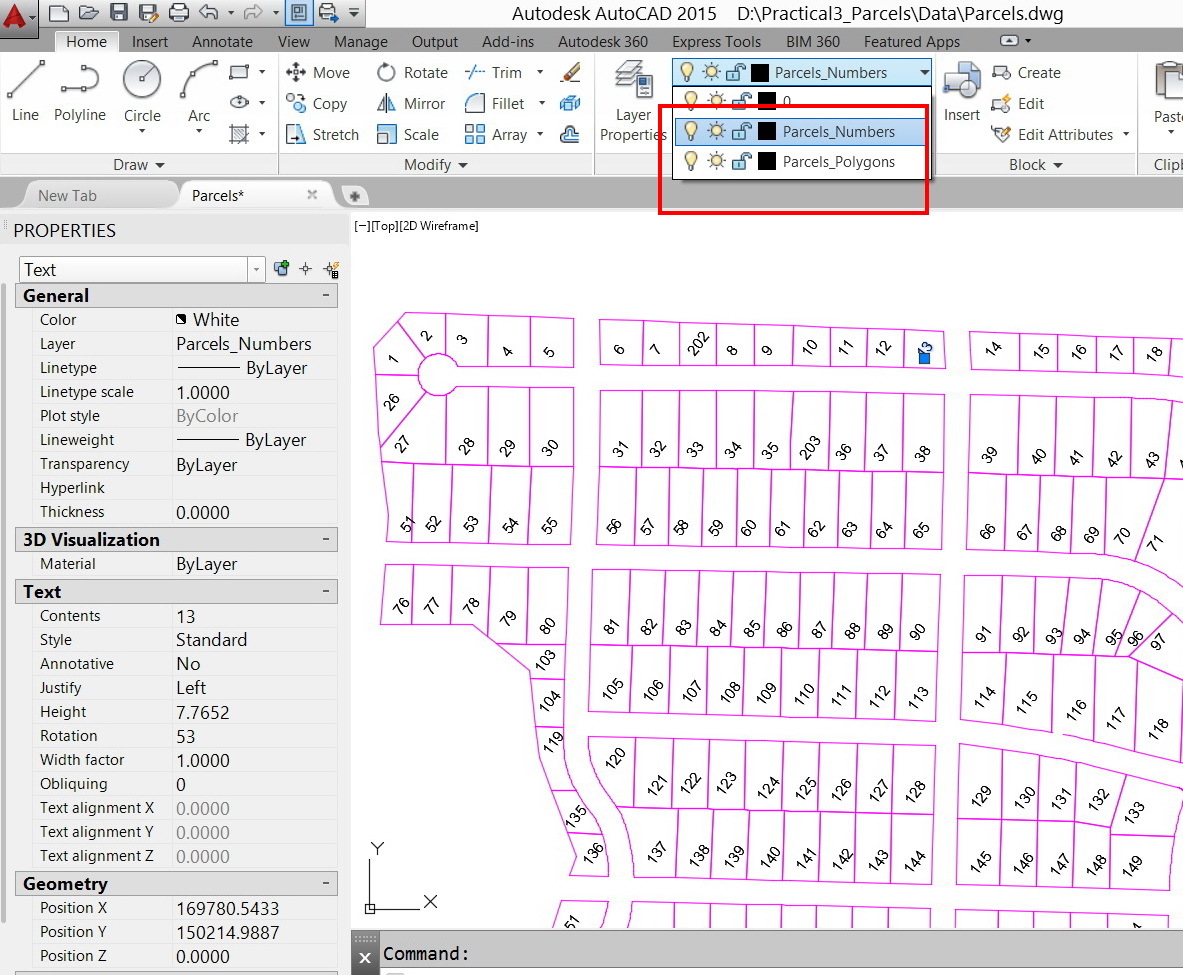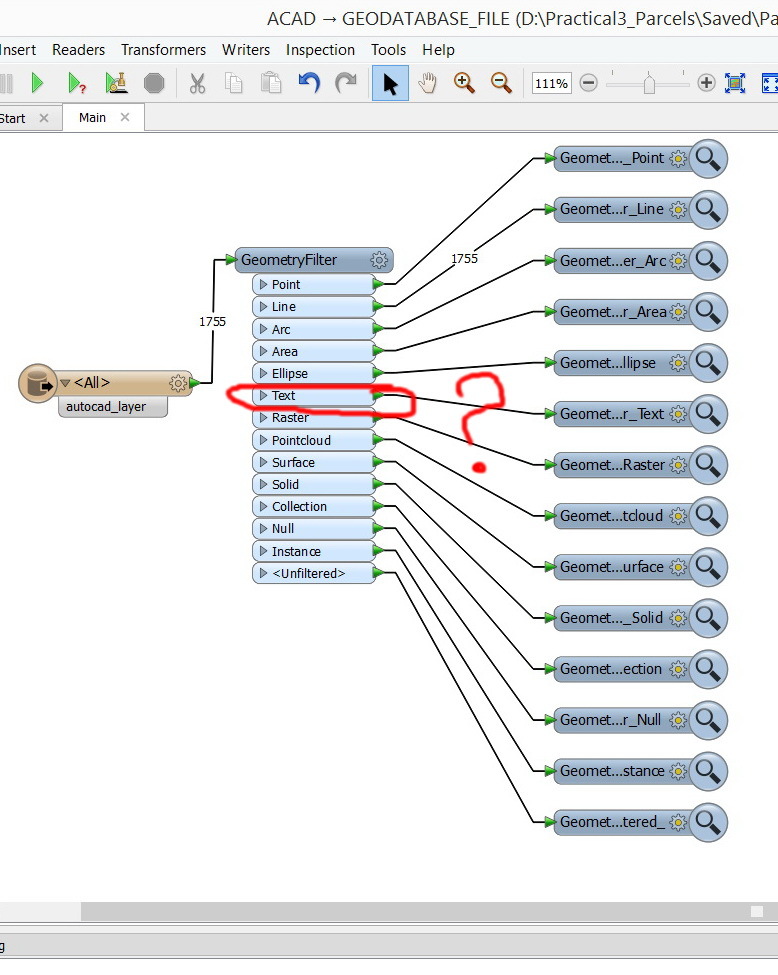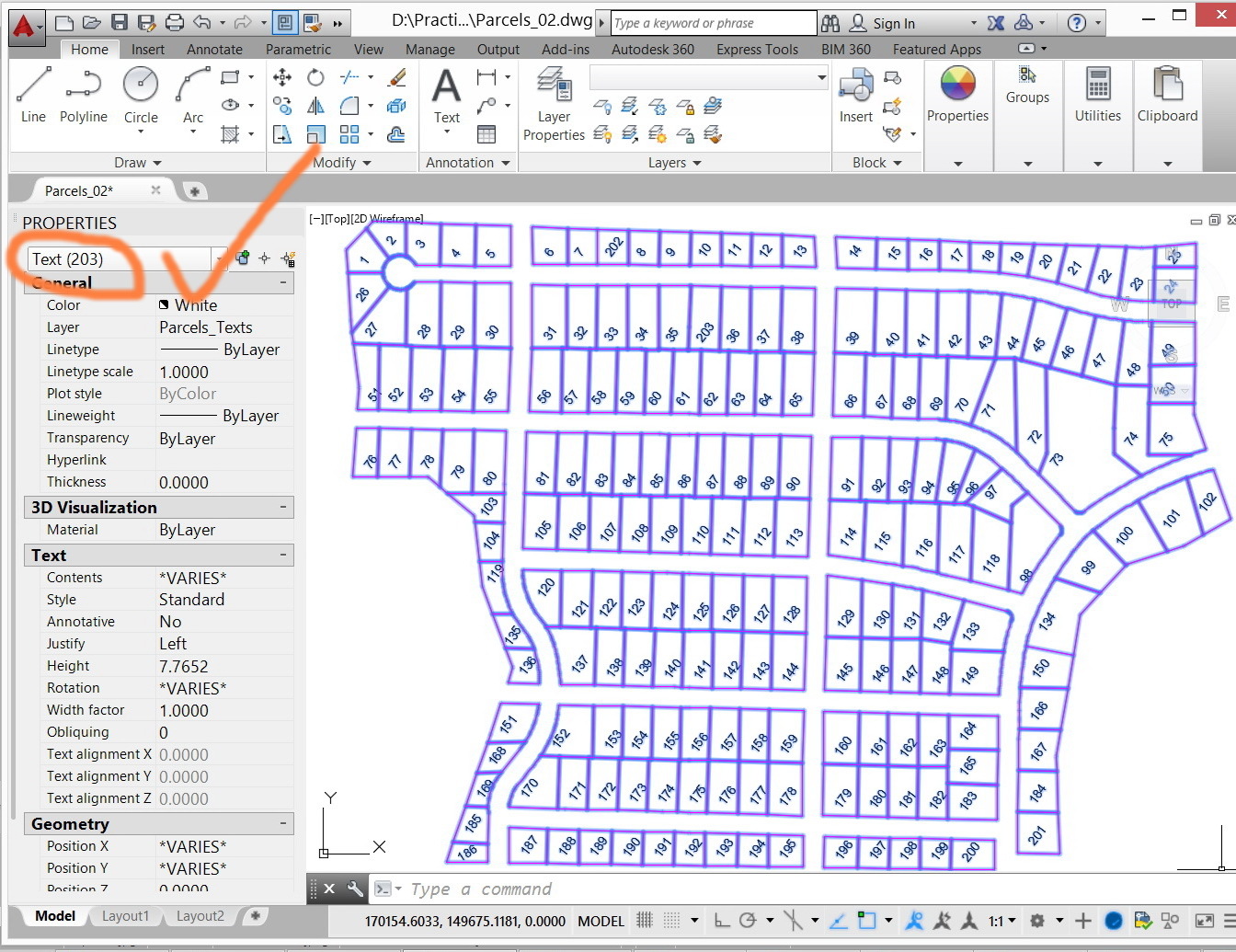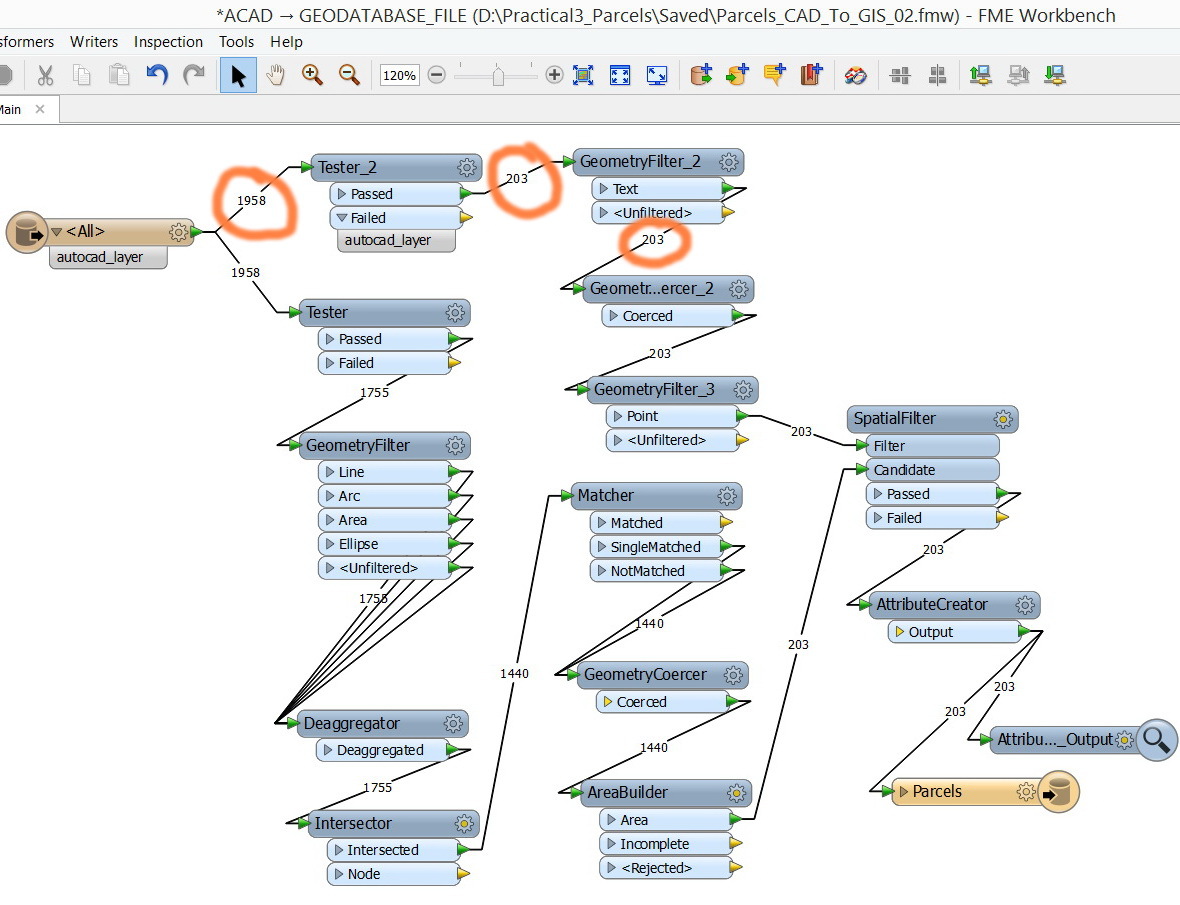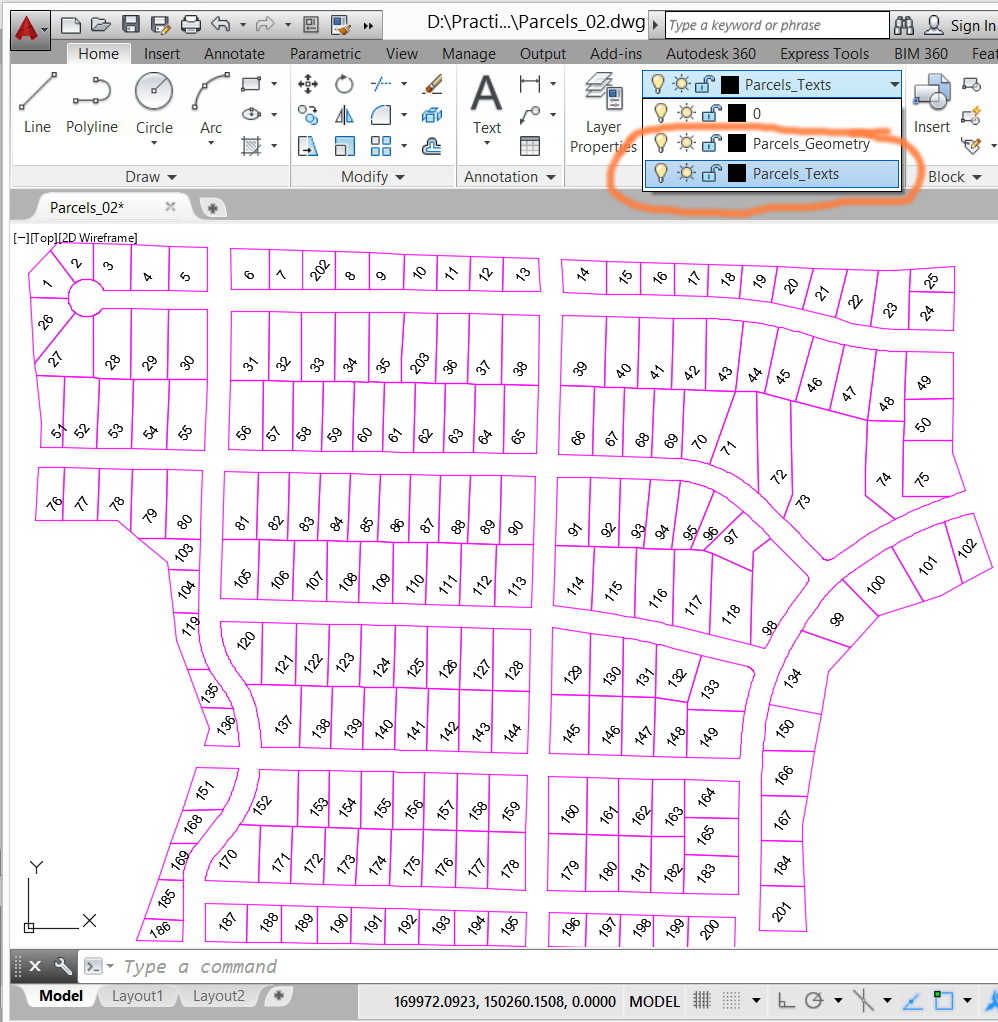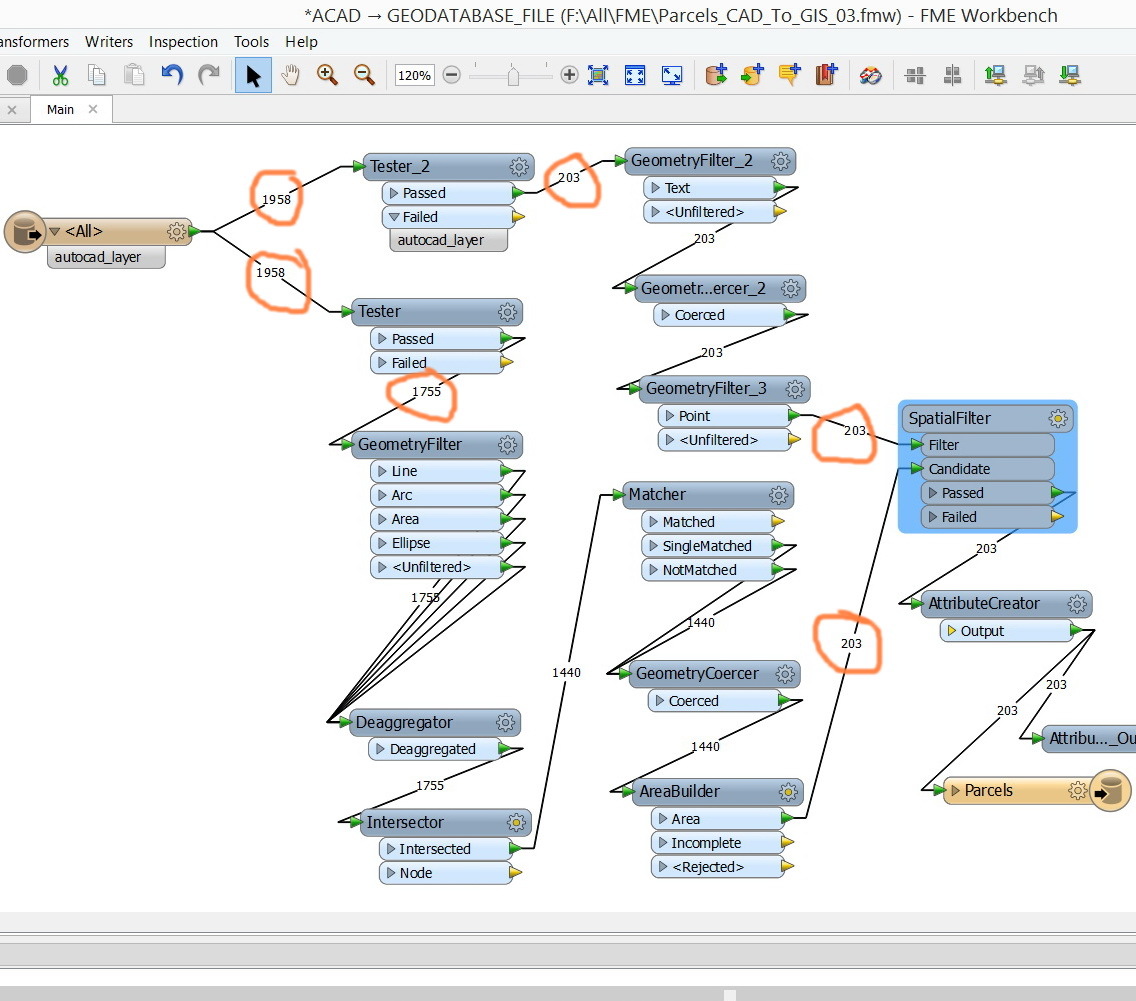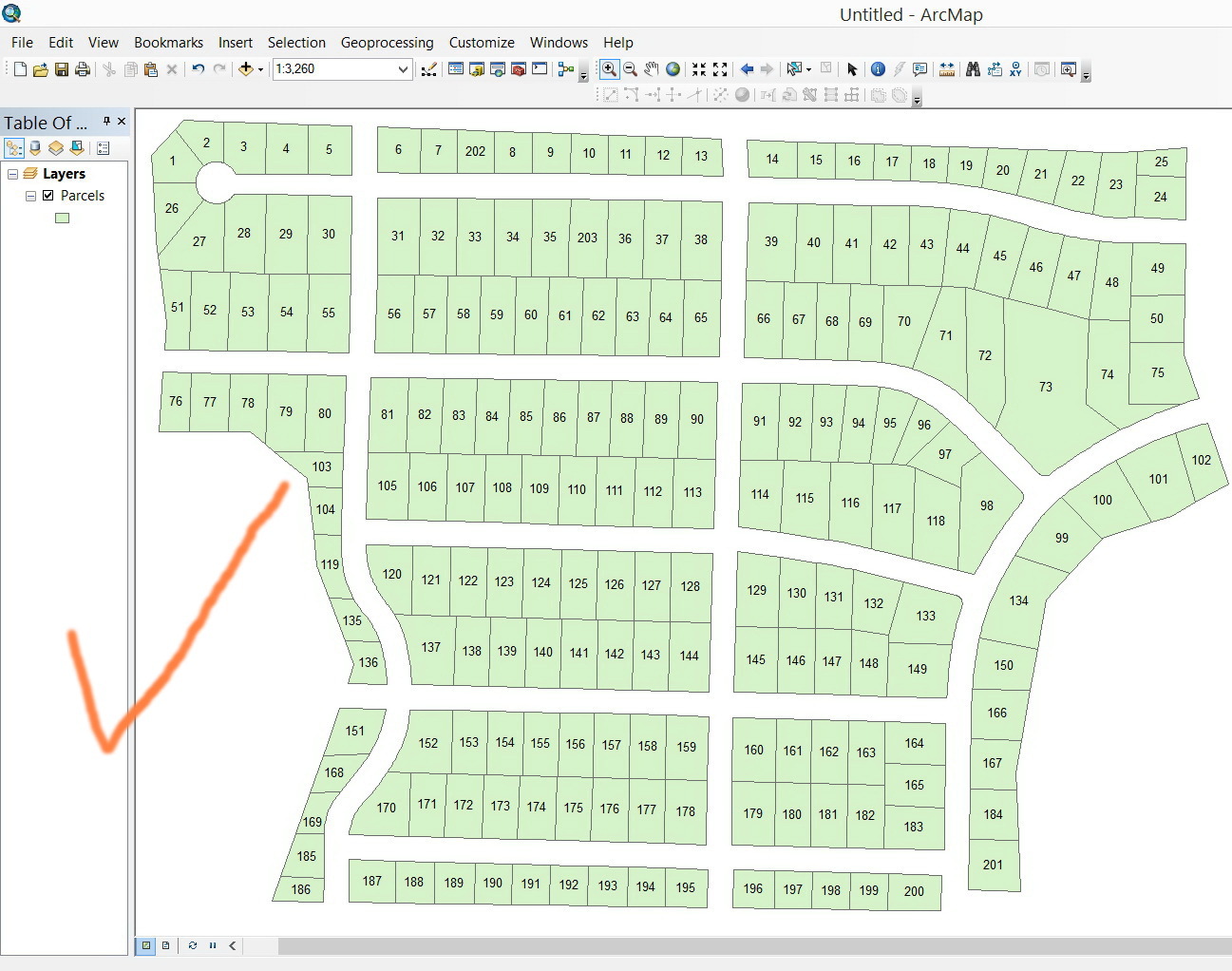I couldn’t figure out how to convert the CAD texts to points in the FME. In the ArcGIS, the CAD texts are recognized as “annotation” and thus can be selected and converted to points whose attribute table carries the value of the text.
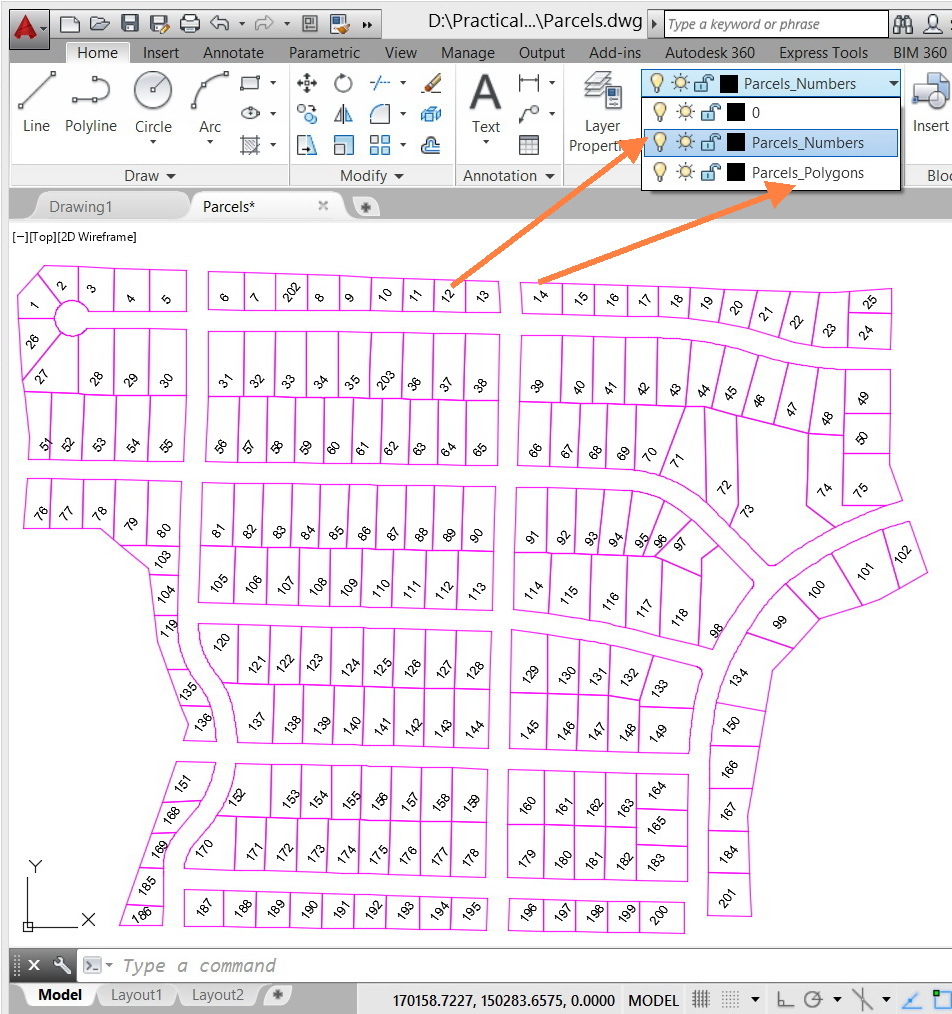
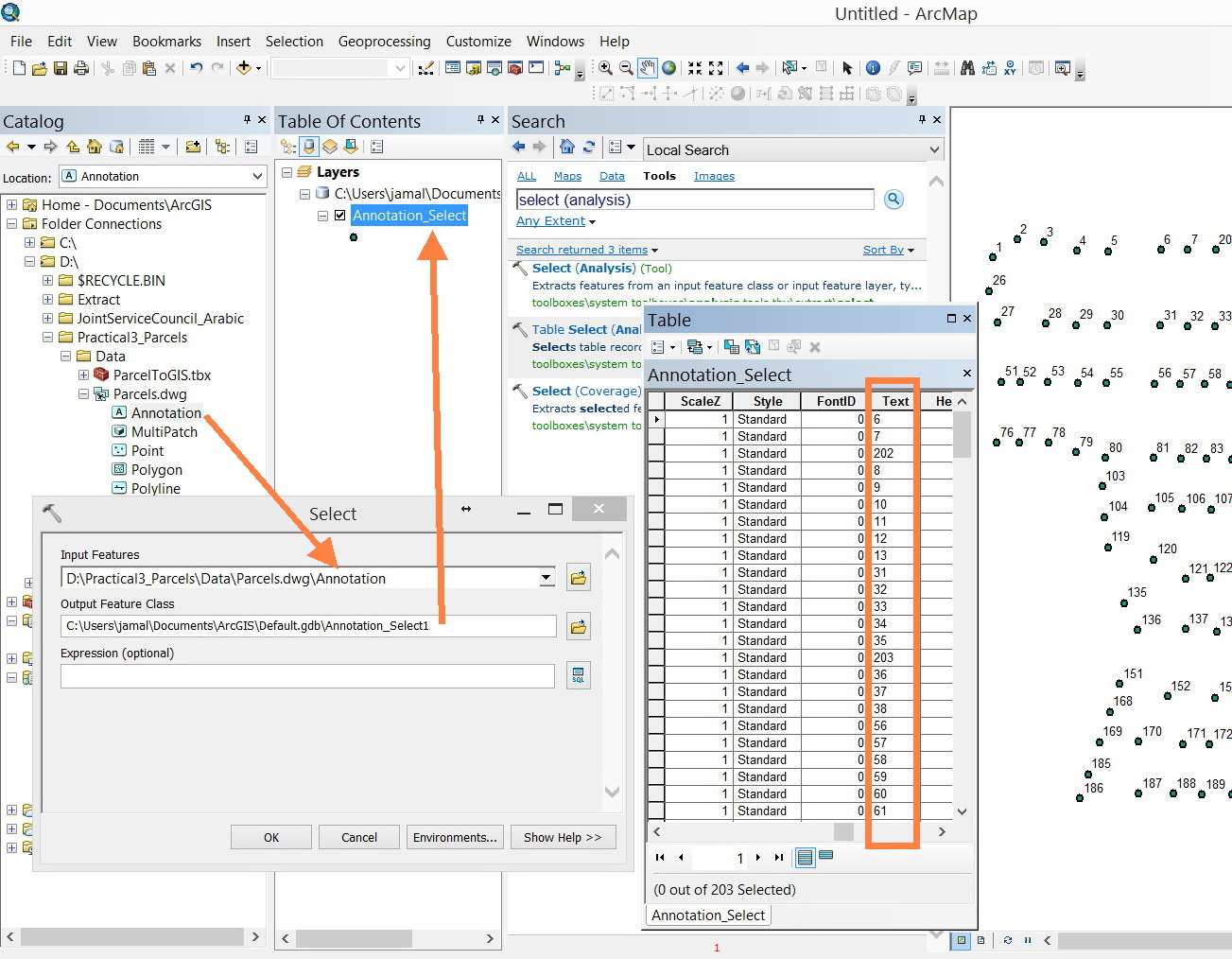
How this can be accomplished in FME?
The dwg file:
http://www.mediafire.com/download/xhrc6kchbacx0s0/Parcels.dwg
Thank you
Best
Jamal




